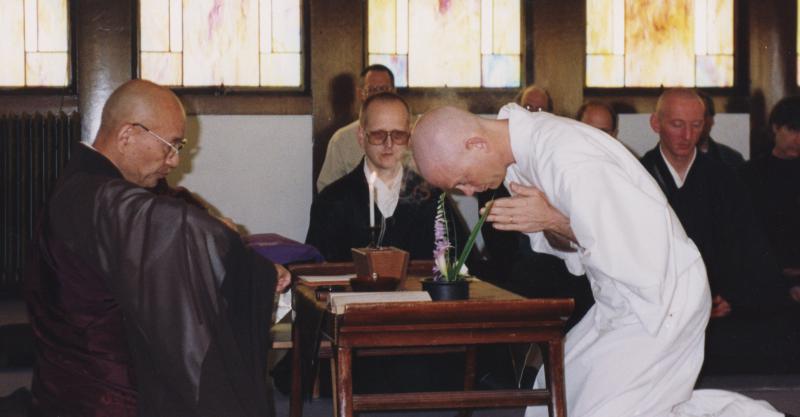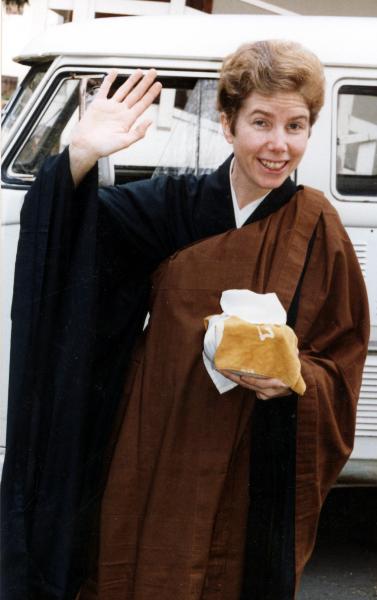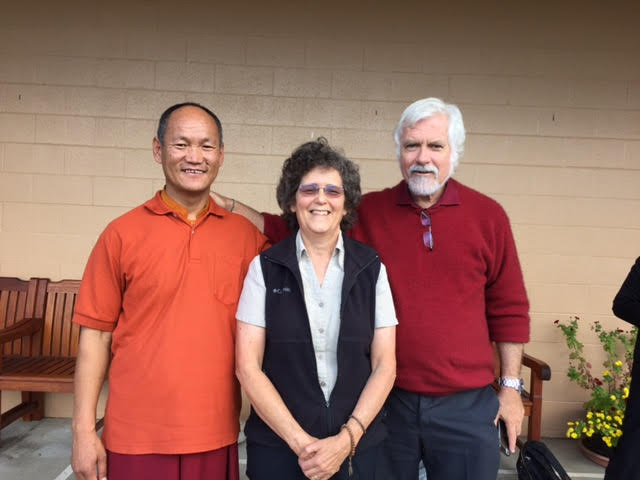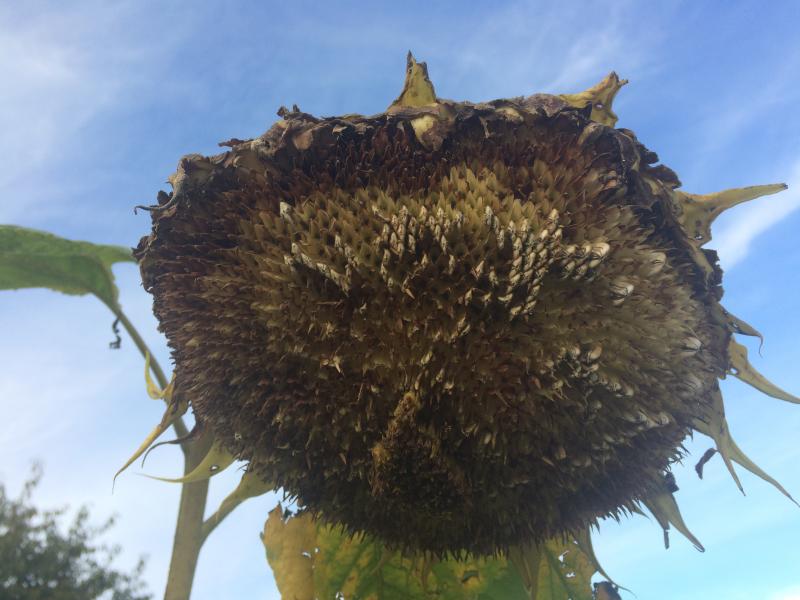Xiushan said, “What can you do about the world?”
Dizang said, “What do you call the world?”
What brings us to the Dharma? Inspiration? Aspiration? Personal Transformation? Freedom? Love? Vow? A call from the world?
Still in its infancy in America, Zen Buddhism is finding its way as a Spiritual Practice/Religion on this soil. The traditions, methods and practices of Buddhism in Tibet, Nepal, Sri Lanka, Thailand, China, Korea and Japan have been thriving in American hearts for a handful of decades, as we work to synthesize the teachings, integrate the practices, and add our own meaning to the forms and rituals.
At Heart of Wisdom and Great Vow, we are of the Japanese Zen Buddhist lineage. Our Abbots and the guiding teachers of the Zen Community are first generation American Zen Teachers, studying primarily with Japanese teachers, first Maezumi Roshi and then later Shodo Harada Roshi.

Maezumi Roshi came to the States and met a counter-culture revolution. As activists and hippies curious about consciousness and awakening, opened themselves to the teachings and practices of Zen.
“We were all gung-ho for Enlightenment,” Chozen says about the culture of ZCLA in those early years, “We would have done almost anything for Awakening.”

Flash-forward 40 years, I am traveling with Chozen and Hogen to the Soto Zen Buddhist Association (SZBA) Bi-annual conference in Minneapolis, MN. A gathering of priests and teachers from across the country who are tasked with the opportunity to plant and nourish the seeds of the Dharma, as entrusted to them from their teachers.
We are in the lineage of Heart to Heart transmission. Just days before this conference we were seated before Dan Brown and Geshe Sonam, as they guided us through the A-khrid system of Bon Dzogchen teachings. Dan emphasized countless times how these teachings too are passed from Heart to Heart. As the nature of mind is pointed out to students once the teacher feels they have developed capacity in concentrated stability of mind, that they can turn Awareness around and recognize the subtle qualities of Mind’s nature (compassion, clarity and non-conceptual stillness) that are always present.

In our tradition we have the precious practice of sanzen, face to face or we could say heart to heart meeting with a teacher. A situation where teacher and student come together in the purity and openness of zazen, and insight into mind’s nature can be pointed out or tested.
Both traditions wholeheartedly assert that once our mind’s essential nature is recognized, it can be stabilized and practiced on and off the cushion, eventually in all situations of our lives. And we must. As Dogen Zenji continuously reflects, practice-awakening are one happening. Clarity and compassion are recognized, practiced and actualized simultaneously.
But, we are masters of self-deception. Due diligence to deepen the groove of clarity and compassion until they become automatic requires more then a half-hearted commitment to living a life of practice. We need to be uncompromisingly aware of our connection to all beings and this world. Here the eyes of Compassion wide open. This is the view from which our vow to Awaken All Beings springs forth.
The Tibetan sage Longchempa says “All appearances are a display of one’s own Heart.”

What do you call the world?
We live in a world with myriad distractions, countless struggles and complex, global and systemic, forms of oppression. Where do we put our attention–as wars persist in the Middle East, as refugees continue to search for a place to call home, as homelessness grows in our own cities, as black men die at the hands of police, and the temperatures on our globe continue to rise?
What can you do about the world?
“Our practice will not tell us exactly what to do in the face of global crisis,” David Loy, the key-note speaker at the conference this year poses, “but doesn’t the Dharma give us what we need to respond?” He is talking about the expansive, non-dual, compassionate view of our awakened nature and the confidence granted one who is committed to actualizing awakening in every expression of their life.
Once when Chozen was at a Western Dharma Teachers’ meeting with the Dalai Lama, she asked him the famous koan about the end of the world, from the Book of Serenity Case 33 Dai Zui’s Kalpa Fire.
A monk asks Dai Zui, “When the world is destroyed by the great kalpa fire at the end of this eon, will It be destroyed?”
Da Zui replies “It will be destroyed.”
on another occasion he responds “It will not be destroyed.”
She says that the Dalai Lama smiled and with a sparkle in his eye, responded: “We must work as hard as we can so that the world does not become destroyed, and if it does KAPOW!”
We are all called to respond to the world in which we live, in our own unique way–the world asks this of us. Some of us will meet this life as lawyers, as activists, as police officers, as temple leaders, as monastics, as teachers, as parents, as gardeners, as friends… How fully we actualize our awakened nature is a very deeply personal experience, and yet, we must work as hard as we can.

For the sake of the world, may we practice and live from our complete, whole, selfless and perfect nature. Is it possible to do anything less?
